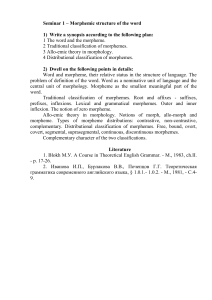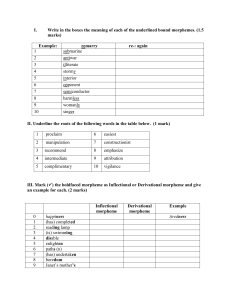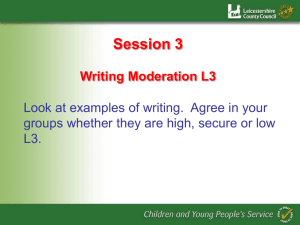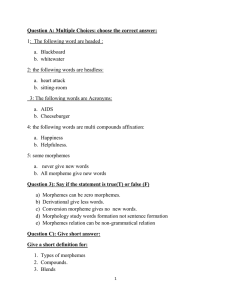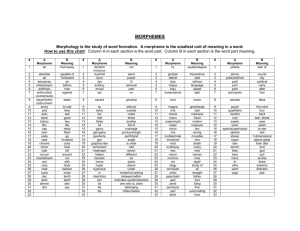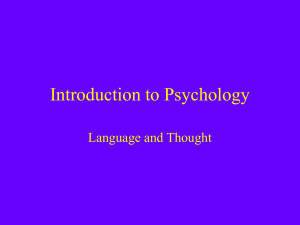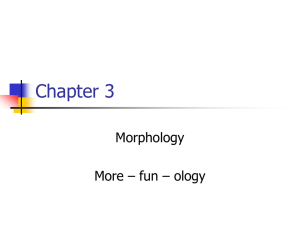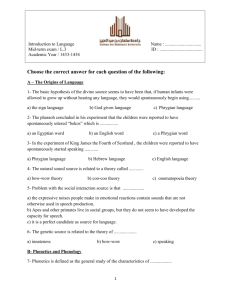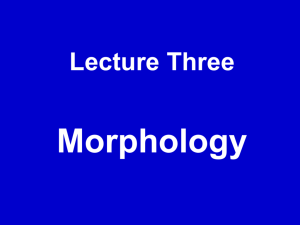Andrew Rosen The Building Blocks of Language • Phoneme – The
advertisement
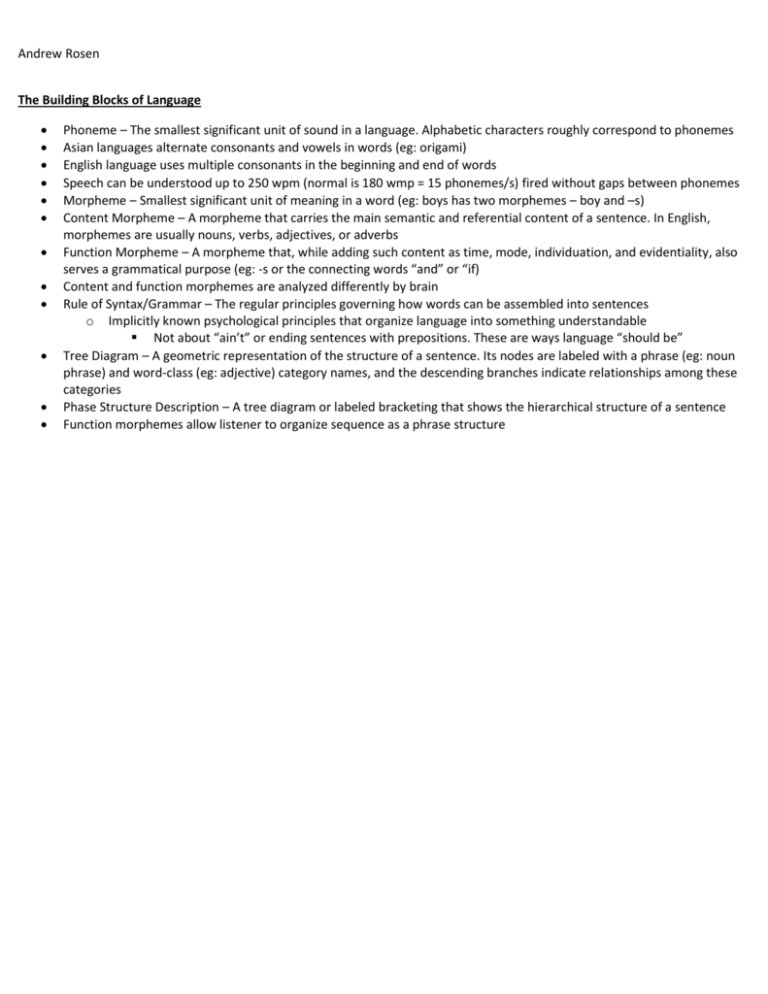
Andrew Rosen The Building Blocks of Language Phoneme – The smallest significant unit of sound in a language. Alphabetic characters roughly correspond to phonemes Asian languages alternate consonants and vowels in words (eg: origami) English language uses multiple consonants in the beginning and end of words Speech can be understood up to 250 wpm (normal is 180 wmp = 15 phonemes/s) fired without gaps between phonemes Morpheme – Smallest significant unit of meaning in a word (eg: boys has two morphemes – boy and –s) Content Morpheme – A morpheme that carries the main semantic and referential content of a sentence. In English, morphemes are usually nouns, verbs, adjectives, or adverbs Function Morpheme – A morpheme that, while adding such content as time, mode, individuation, and evidentiality, also serves a grammatical purpose (eg: -s or the connecting words “and” or “if) Content and function morphemes are analyzed differently by brain Rule of Syntax/Grammar – The regular principles governing how words can be assembled into sentences o Implicitly known psychological principles that organize language into something understandable Not about “ain’t” or ending sentences with prepositions. These are ways language “should be” Tree Diagram – A geometric representation of the structure of a sentence. Its nodes are labeled with a phrase (eg: noun phrase) and word-class (eg: adjective) category names, and the descending branches indicate relationships among these categories Phase Structure Description – A tree diagram or labeled bracketing that shows the hierarchical structure of a sentence Function morphemes allow listener to organize sequence as a phrase structure


